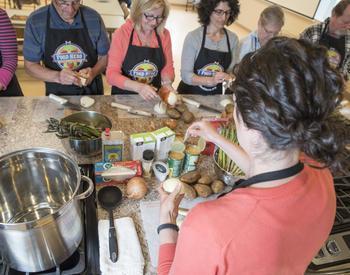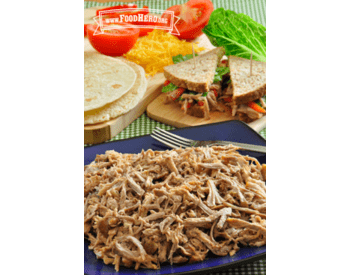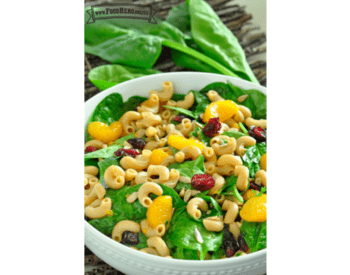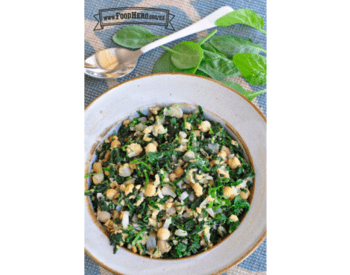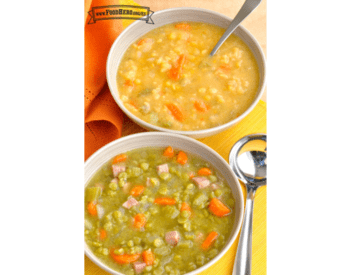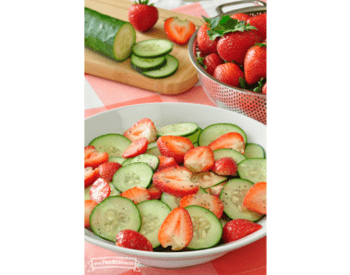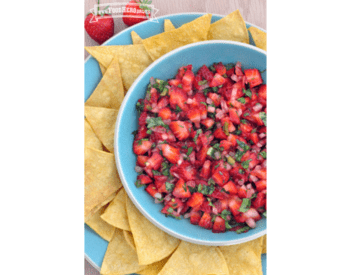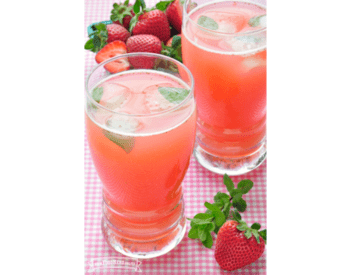Transcript
Hi, my name is Kelly Street, and I'm a registered dietitian with the OSU Extension Service Family and Community Health Program based in Clackamas County. Today, we're going to learn how to pH test an acidified food product that you plan to sell under the Oregon Farm Direct Marketing Law.
pH measures the acidity level in a food or solution using a scale between 1 and 14. A pH value of 1 is most acidic, a pH value of 7 is neutral, and values above 7 are considered basic. It's important to test the pH because values above 4.6 are associated with a risk for botulism. A food product sold under the Oregon Farm Direct Marketing Law must have a pH value less than or equal to 4.6.
According to the acidity chart, most fruits fall below 4.6, while vegetables and protein foods all fall above 4.6. Acidification or pickling is the process of adding acid to a low-acid food during processing to lower the equilibrium pH to 4.6 or below. Some examples of acidified foods include pickled vegetables such as asparagus, cucumbers, or green beans, chutneys, hot sauces, relishes, and salsas. These products can be sold under the Oregon Farm Direct Marketing Law if they are prepared using a tested recipe, and a pH test is done for each batch.
Before we can test the pH of a product, we need to calibrate the meter. Since we are testing acidified foods, we are using a meter that performs a two-point calibration. This requires the use of pH 4 and pH 7 buffer solutions. In addition, we will need distilled water and jars to hold our buffer solution.
To calibrate the meter, turn on the meter and place the electrode into the 4.0 buffer solution. Press the Cal key, and when the calibration is complete, the display reads "End." Rinse the electrode with distilled water and repeat the process with the 7.0 buffer solution. Record the readings.
Now, we are ready to prepare our food samples. We are testing the pH of chili salsa and pickled green beans. These products were processed a few months ago, so we are confident that an equilibrium pH has been reached. Wait at least 24 hours after processing to test the pH of a product; this is the minimum time necessary for it to come to an equilibrium pH.
For the chili salsa, the pieces are small enough that we can test this sample as a liquid. However, for the pickled green beans, since they are solid, we need to prepare a slurry out of them first. We want to separate the liquid from the solids. Add a little bit of distilled water to the solid beans to create a slurry.
To test the pH of our food samples, begin by rinsing the probe with distilled water. Turn on the meter and immerse the tip of the probe into the sample. Wait for the calibration to be complete, record the number, rinse the probe, and repeat the process two more times. Average the pH readings and record that figure in the pH testing log. After completing testing, follow the instructions included with your meter to properly clean and store it.
Thank you for watching our demonstration on how to test the pH of an acidified food product that you plan to sell under the Oregon Farm Direct Marketing Law. We hope that you found the information helpful. For more information, contact the OSU Extension Service or the Oregon Department of Agriculture. Thanks for watching.
Proper use of a pH meter is crucial in ensuring that processed foods are safe for consumption. This video, produced by the Oregon State University Extension Service, Family & Community Health program in Clackamas County demonstrates how to properly pH test pickled foods. Including, how to calibrate a pH meter, prepare food samples for testing, test food samples, and average and record the results. It also shares information about the Oregon Farm Direct Marketing Law and what different pH readings mean on the acidity chart.
